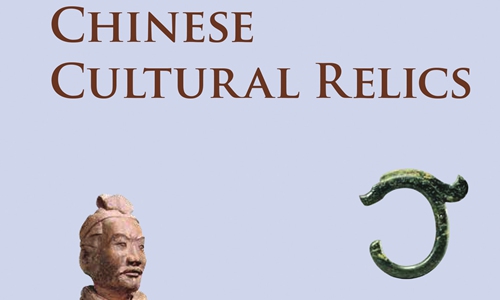ARTS / CULTURE & LEISURE
Book Express
Chinese Cultural Relics
Paintings of the Han and Jin Dynasties
During the production of the Han stone sculpted painting, the painters first drew drafts on the surface of the selected stone (usually flat and smooth stone), the stoneworkers chased and chiseled according to the painting drafts, and then the painters would apply colors to the sculpted stone. Therefore, the overall artistic effect of the Han stone sculpted painting is more similar to paintings rather than stone sculpture. Han stone sculpted paintings usually depicted daily life, social activities and funerary activities for the dead buried in tombs. In addition, they also chose to apply such themes as primitive worshipping and the worshipping of the gods and the divine. These sculpted paintings were similar to murals engraved in the walls of the tombs, vividly depicted the prominent status of the dead before their death, their luxurious living and their worshipping of the ancestors, gods and the divine, and conveyed their desire for luxurious life in the afterlife and their desire for immortality. The figure sculptures of Han stone sculpted paintings usually showed the profile posture of the figures, and only a very few portraits were in the obverse posture; therefore, the rubbings made were usually in the form of silhouette. The composition of paintings usually applied the horizontal view along the base line. Under this technique, the images were completely arranged horizontally along the base line, in disregard of any depth or distance. At the same time, the entire stone surface was divided into several columns, with images in different columns standing as independent units and with different themes, and on some stone, as many as seven columns were designed on a single stone.
About the book
Chinese Cultural Relics Written by Li Li Published by China Intercontinental Press

Paintings of the Han and Jin Dynasties
During the production of the Han stone sculpted painting, the painters first drew drafts on the surface of the selected stone (usually flat and smooth stone), the stoneworkers chased and chiseled according to the painting drafts, and then the painters would apply colors to the sculpted stone. Therefore, the overall artistic effect of the Han stone sculpted painting is more similar to paintings rather than stone sculpture. Han stone sculpted paintings usually depicted daily life, social activities and funerary activities for the dead buried in tombs. In addition, they also chose to apply such themes as primitive worshipping and the worshipping of the gods and the divine. These sculpted paintings were similar to murals engraved in the walls of the tombs, vividly depicted the prominent status of the dead before their death, their luxurious living and their worshipping of the ancestors, gods and the divine, and conveyed their desire for luxurious life in the afterlife and their desire for immortality. The figure sculptures of Han stone sculpted paintings usually showed the profile posture of the figures, and only a very few portraits were in the obverse posture; therefore, the rubbings made were usually in the form of silhouette. The composition of paintings usually applied the horizontal view along the base line. Under this technique, the images were completely arranged horizontally along the base line, in disregard of any depth or distance. At the same time, the entire stone surface was divided into several columns, with images in different columns standing as independent units and with different themes, and on some stone, as many as seven columns were designed on a single stone.
About the book
Chinese Cultural Relics Written by Li Li Published by China Intercontinental Press

Book Chinese Cultural Relics written by Li Li Photo: Courtesy of China Intercontinental Press

